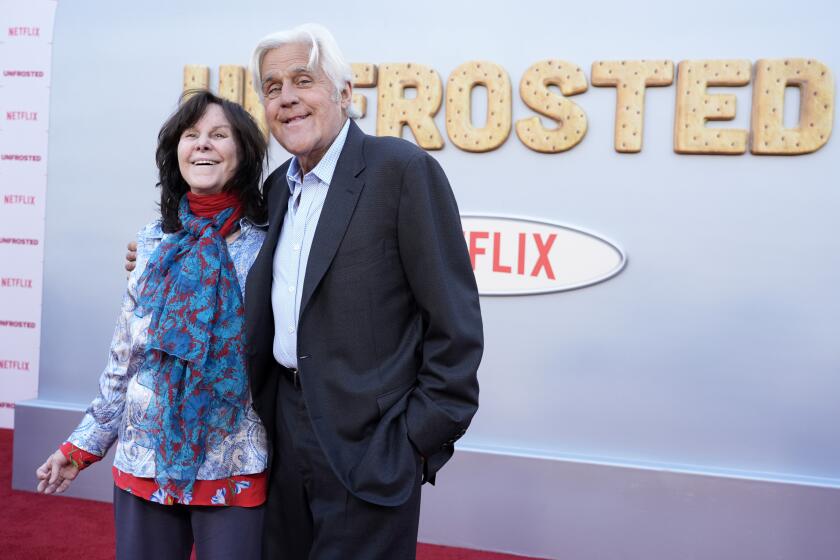Autry Display Includes Works That Depict the Old West in New Light
- Share via
Long before European-Americans moved West, we knew what its towering mesas and proud indigenous people looked like. Artists showed us. Artists have always mediated our understanding of the West, for better or for worse, and they continue to do so today, in everything from movies to advertising.
“Covering the West: The Best of Southwest Art Magazine” opens Saturday at the Autry Museum of Western Heritage, a leading center for study of visions of the West and the West of the imagination.
The traveling exhibit, which showcases artists whose work has appeared on the cover of the Houston-based magazine, was a collaboration between the 26-year-old journal and the Colorado Springs Fine Arts Center. The show, which opened in Colorado Springs, Colo., last year, continues at the Autry through May 27, then moves on to the Albuquerque Museum in New Mexico.
Almost by definition, Western art is representational. Artists such as David Hockney, whose work is often firmly rooted in the modern Western landscape, from its turquoise swimming pools to its desert highways, are never considered Western artists per se. When people talk of Western art, they usually mean work filled with recognizable cattle skulls and bucking broncos and Paiute or Sioux whose eyes are sad with the knowledge that their traditional way of life is vanishing. They usually mean art with a sentimental, nostalgic regard for a West that has been disappearing almost since the time it was discovered.
Today’s Western art is enormously varied, both in quality and theme, according to Susan McGarry, editor in chief of Southwest Art. Traditionally, she says, Western art was dismissed, especially by Eastern critics, because it was outside the mainstream abstract movement. The Western regionalists tended to do work in which a quirt was identifiable as a quirt, however sophisticated the composition or the palette. But, as McGarry notes, “anything that was figural or representational smacked of illustration” and, thus, tended to be written off.
But even in the larger art world, representational work is getting renewed respect, McGarry says. And so, inevitably, is the work of the best Western artists, even the ones who have always maintained that “it isn’t an art crime to make a horse look like a horse.” According to McGarry, many of today’s best-known Western artists were trained as illustrators.
But there is a new generation of baby boomer Western artists emerging, many of whom have fine-arts backgrounds and have been solidly trained in abstract art. In the work of these artists, she says, “you’re getting the best of both worlds.”
*
In an essay in the magazine about the show, art historian Michael Duty makes a distinction between narrative Western art and what he calls emblematic art. Narrative art, such as that of Charlie Russell or Frederic Remington, as well as a host of contemporary artists, tells a story. Emblematic art, such as Paul Pletka’s stunning “Bone People,” uses distortion and other expressionistic techniques to draw the viewer’s eye to “aspects of the image they might otherwise overlook.”
As Duty writes, “One way of noting the difference between narrative and emblematic works is to think of the differences between the traditional heroes of filmmaker John Ford, whose movies (e.g., ‘Stage Coach,’ ‘The Man Who Shot Liberty Valence’) drew on the strengths of the dime-store novel combined with history, vs. the unconventional heroes of Robert Altman (‘McCabe and Mrs. Miller,’ ‘Buffalo Bill and the Indians, or Sitting Bull’s History Lesson’). Both have made Westerns grounded in the same mythology, but their points of view about what the West means are radically different.”
McGarry notes with regret that only a handful of women artists are represented in the show. The reason that more women are not making Western art, she speculates, is the same reason they don’t make more mainstream art. “A lot of women artists don’t have careers that begin until the children are gone,” she says. She adds that the women artists she has encountered tend to be less aggressive about marketing their work than their male counterparts.
Since its start, Southwest Art has been directed at collectors, not artists. “Everything we include in Southwest Art magazine is designed to teach people not how to create art, but how to appreciate art.” Reporters for the magazine typically interview artists in their studios in order to educate readers.
Above all, McGarry says, Western art is about place. The Western art movement is closely tied to the back-to-the-earth and ecology movements. “It’s very landscape oriented,” she says. And two of its favorite subjects are cowboys and Native Americans, both of whom have profound respect for and understanding of the land.
In McGarry’s view, the message of Western art is essentially an optimistic one. “We’re not alienated from the ground we walk on,” she says. “It’s not all asphalt and concrete.”
DETAILS
* WHAT: Exhibit, “Covering the West: The Best of Southwest Art Magazine,” at the Autry Museum of Western Heritage.
* WHERE: 4700 Western Heritage Way, in Griffith Park, across from the Los Angeles Zoo.
* WHEN: Saturday-May 27; 10 a.m.-5 p.m. Tuesday-Sunday.
* HOW MUCH: $7.50 adults, $5 seniors and students with I.D., $3 children 2-12.
* CALL: (213) 667-2000.
More to Read
The biggest entertainment stories
Get our big stories about Hollywood, film, television, music, arts, culture and more right in your inbox as soon as they publish.
You may occasionally receive promotional content from the Los Angeles Times.










